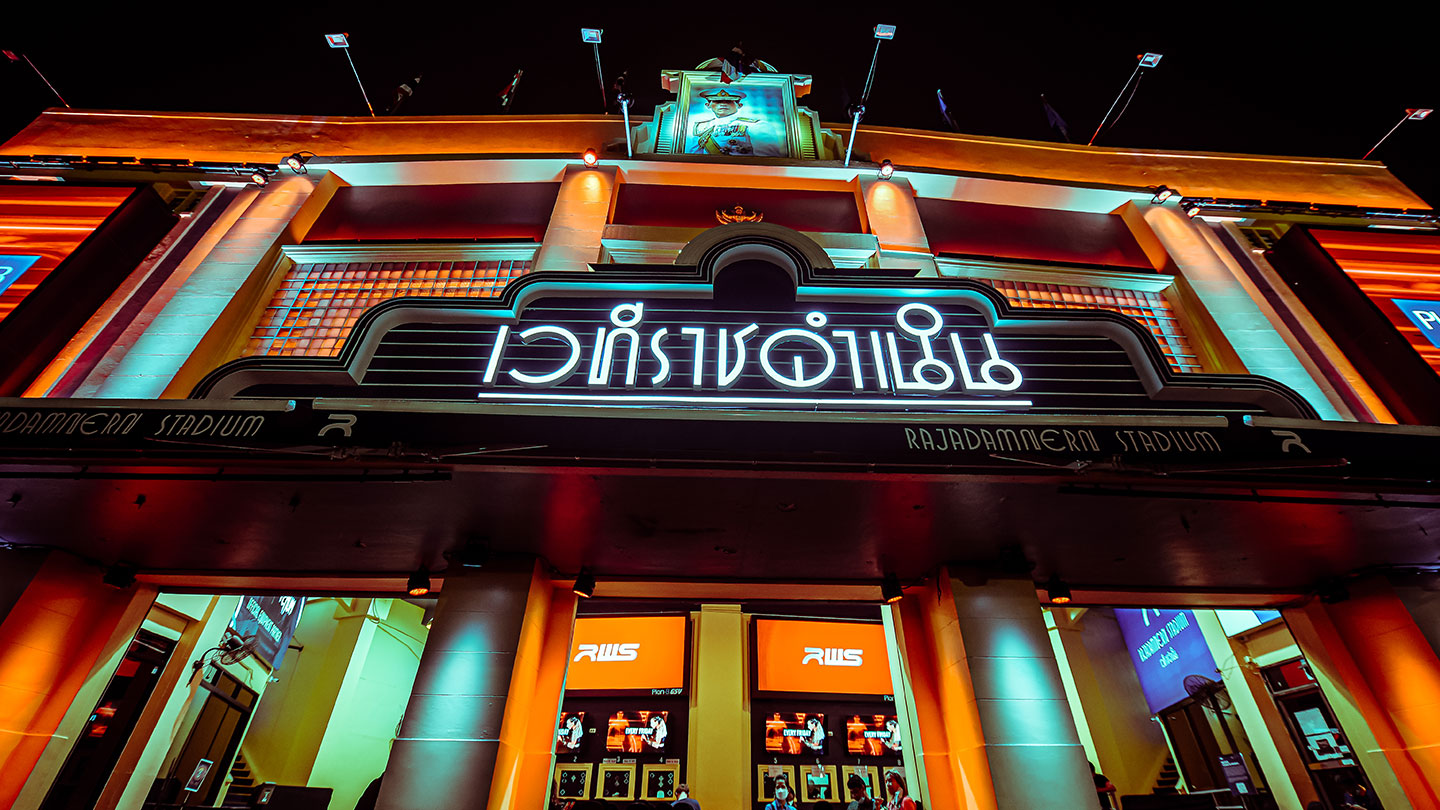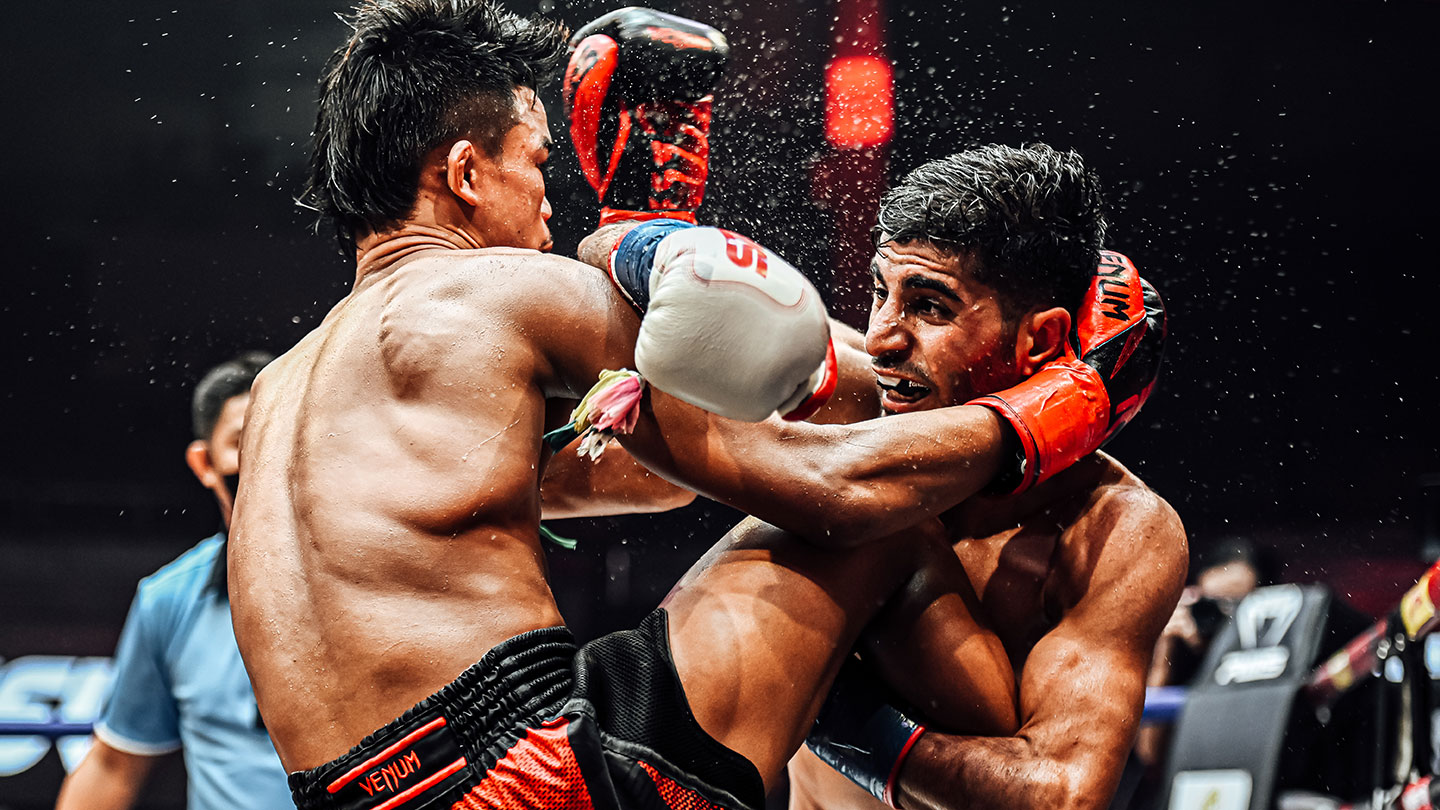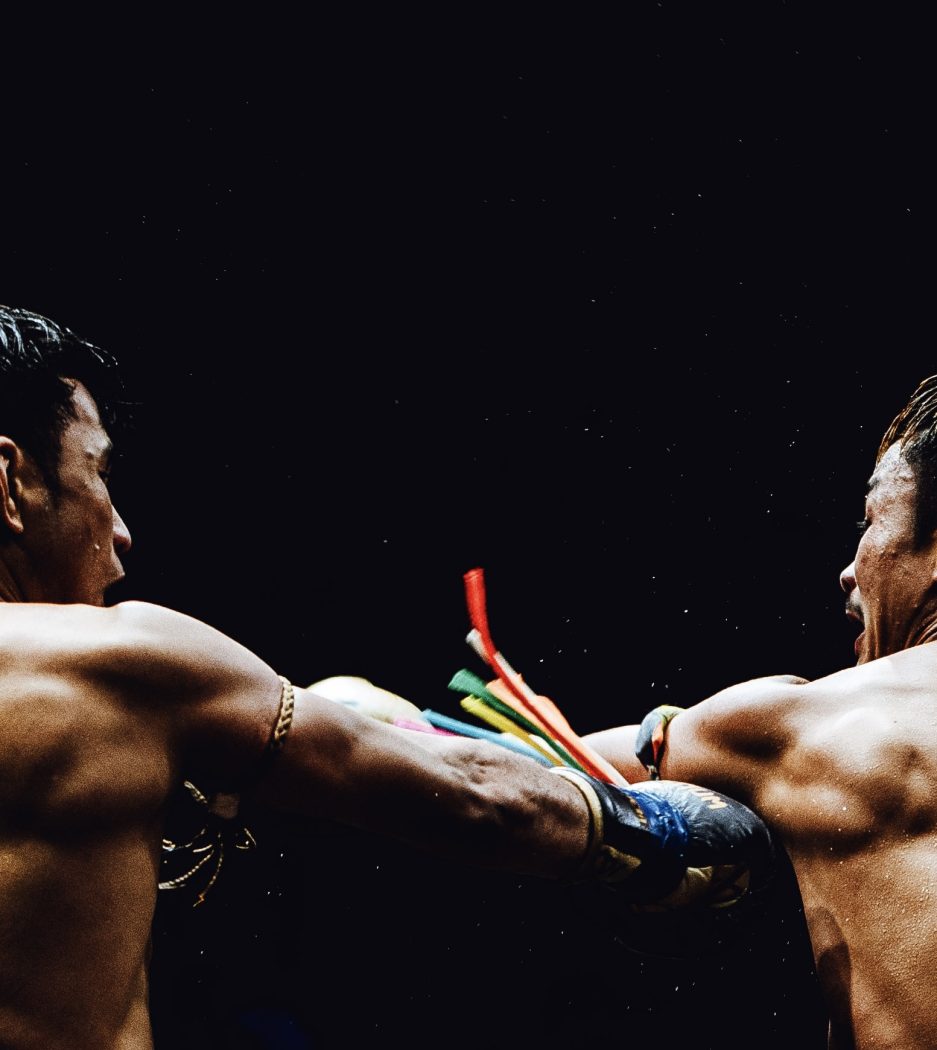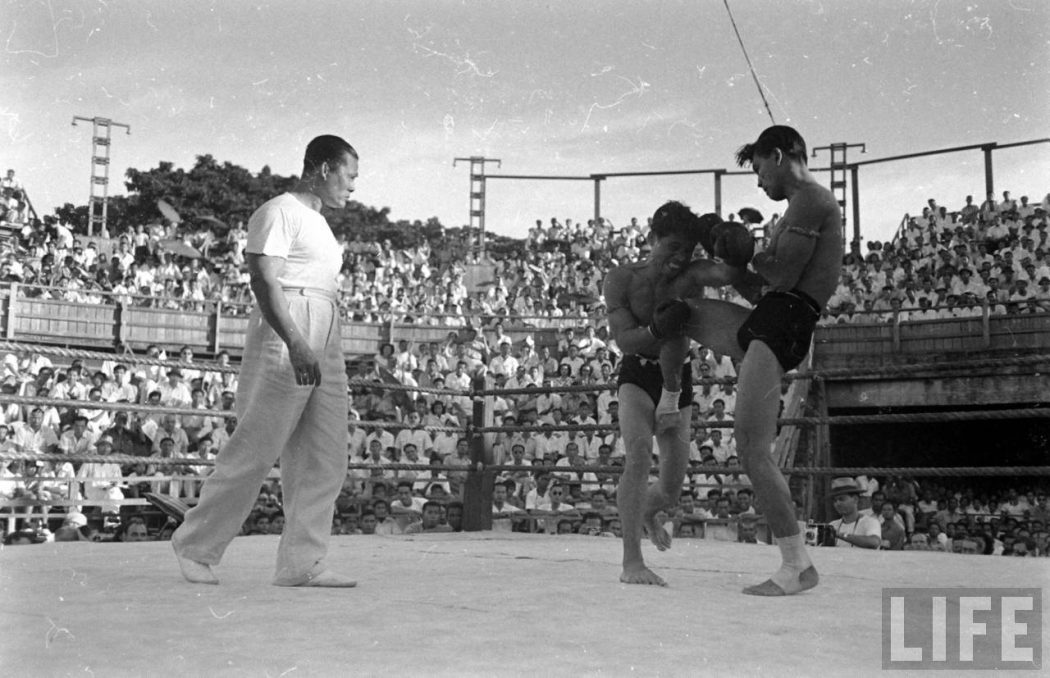Discover the diverse world of Muay Thai with 8 distinct fighting styles. Experience the excitement live at our Muay Thai stadium – book tickets now!
Jan 26, 2024
7 Different Muay Thai Fighting Styles Explained [Ultimate Guide]
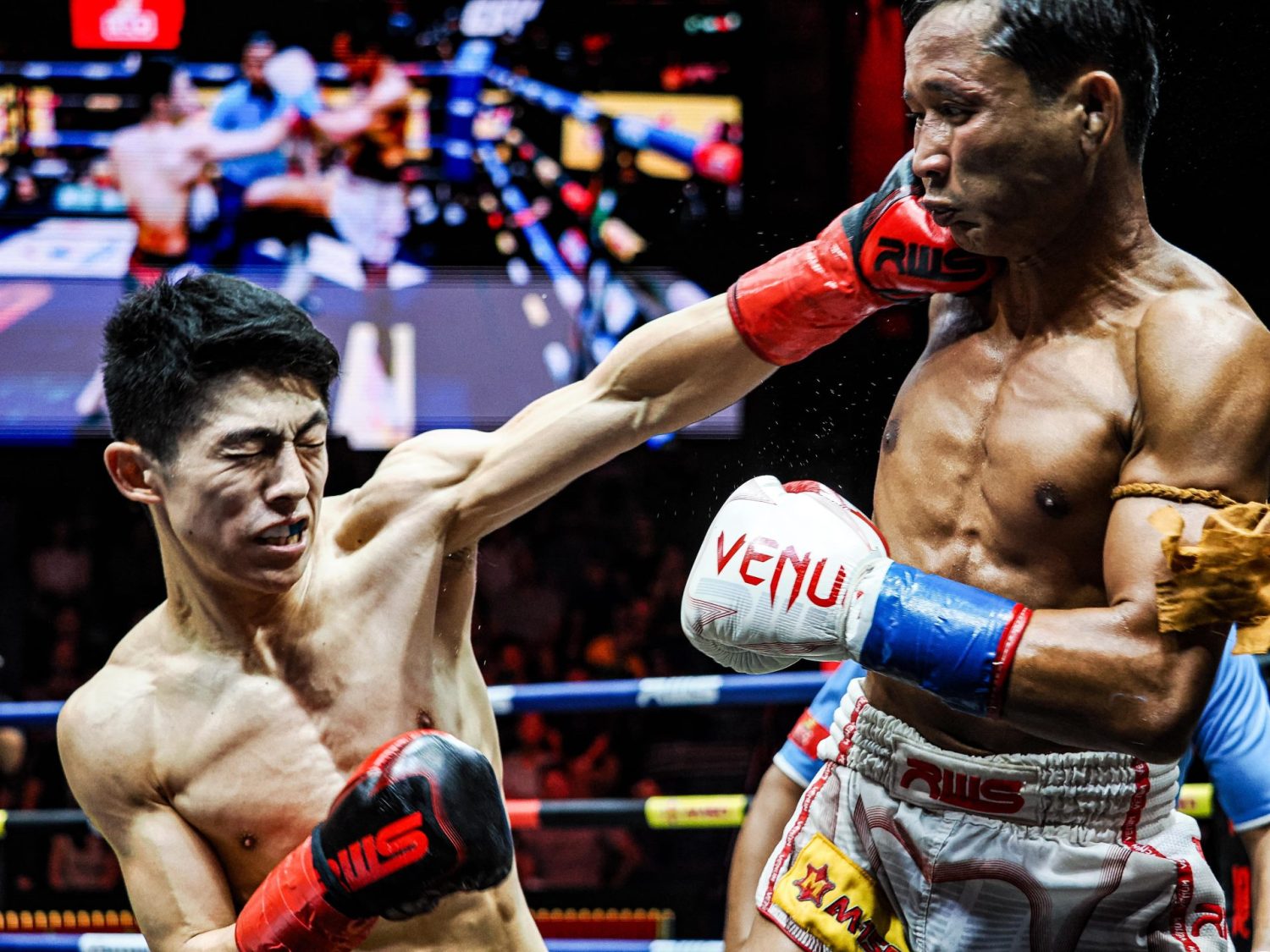
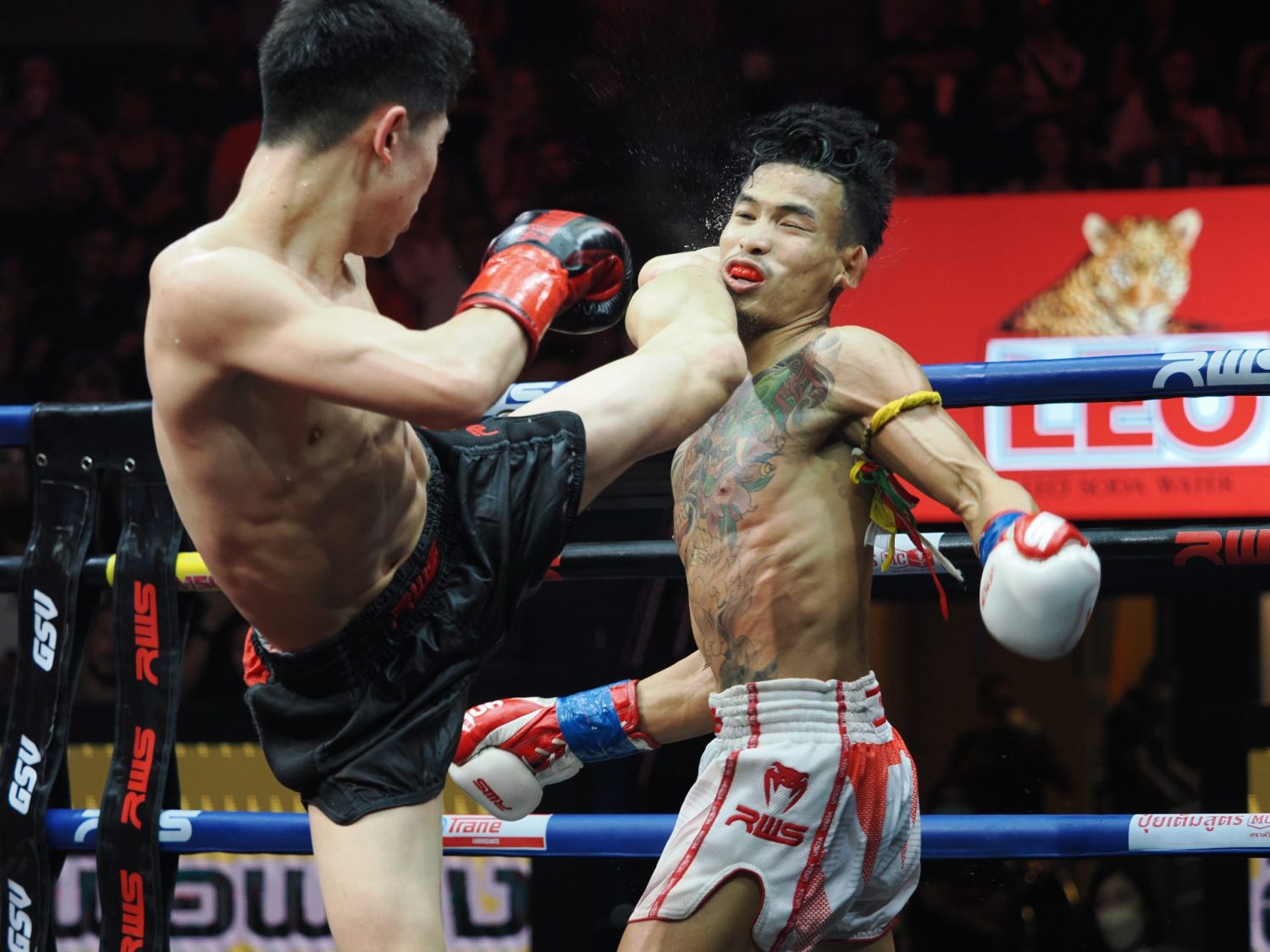
Muay Thai has a rich history, deeply embedded in Thai culture. Its roots can be traced back to ancient battlefields and centuries-old traditions, where warriors developed a unique system of combat. Today, Muay Thai has transcended its historical origins to become a global phenomenon, captivating fans and fighters alike with its raw intensity and tactical finesse. In this ultimate guide, we will delve into the versatile world of Muay Thai, shedding light on Thai boxing styles that have evolved over the years.
Whether you’re an aspiring Muay Thai practitioner, a devoted fan, or simply curious about the world of combat sports, this guide will serve as your compass through the intricate world of Muay Thai fighting styles. So, let’s dive in and explore the nuances of this ancient yet ever-evolving martial art. Discover the varied styles that make Muay Thai a mesmerizing spectacle and a source of inspiration for fighters and fans worldwide.
1. Traditional Muay Thai (Muay Boran)
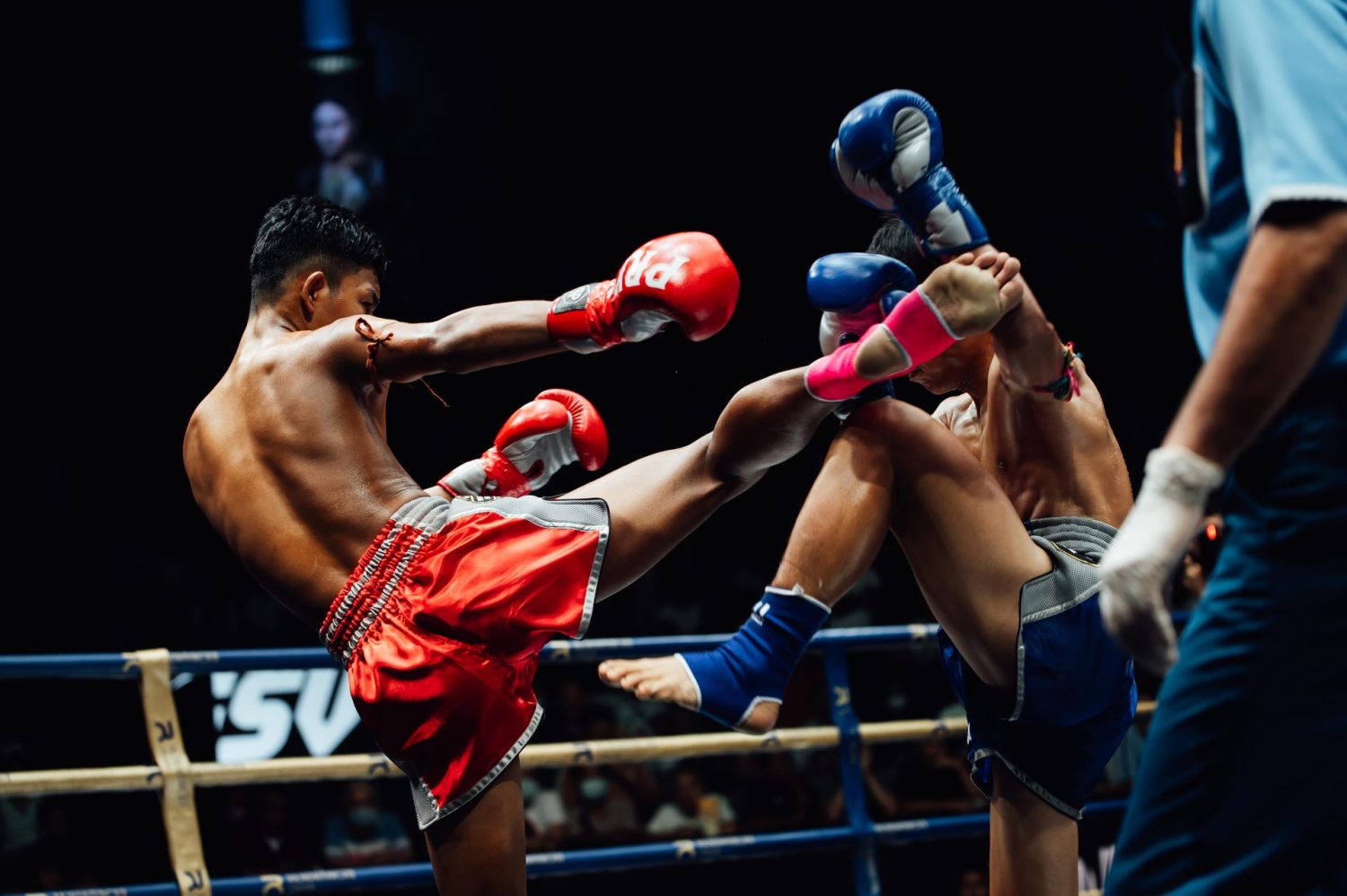
Traditional Muay Thai fighting, known as “Muay Boran,” is the ancestral martial art that laid the foundation for the modern sport of Muay Thai. It is a living testament to Thailand’s rich history and cultural heritage.
Roots and Fundamentals of Traditional Muay Thai
Muay Boran, which translates to “ancient boxing,” has its origins deeply rooted in the battlefields of ancient Siam (now Thailand). Warriors in these times needed a comprehensive fighting system that combined hand-to-hand combat with weapons
One of the key features of Muay Boran is the emphasis on the use of every part of the body as a weapon. Fighters train to strike and defend with fists, elbows, knees, and shins, creating a well-rounded and unpredictable fighting style.
Muay Boran consists of several unique Muay Thai techniques that have been passed down through generations. In addition, before a fight, fighters pay respects to their trainers and perform the “Wai Kru” dance, a ritual that seeks blessings from their ancestors and spiritual protection. The “Ram Muay” is another essential pre-fight ritual, where fighters perform a dance that reflects their unique training camp and style.
Cultural Significance
Muay Boran is not just a combat sport; it is a reflection of Thai culture and tradition. The art is deeply ingrained in Thailand’s identity and history, and it serves as a means to preserve the country’s heritage. Besides, Muay Boran embodies the values of respect, discipline, and honor, which are crucial elements of Thai society.
2. Muay Thai Kickboxing (Kard Chuek)
Muay Thai Kickboxing, commonly referred to as “Kard Chuek,” is a distinct variation of traditional Muay Thai that showcases some notable rule differences and a striking feature – the use of rope-wrapped fists instead of gloves.
Rules and differences in Muay Thai kickboxing
Muay Thai Kickboxing technique retains many of the fundamentals of traditional Muay Thai but features several unique rules and characteristics that make it a separate entity. Here are some of the key differences;
- No Gloves: Fighters wrap their hands with tightly wound hemp or cotton rope, adding a layer of protection to their knuckles and wrists. However, these rope-wrapped fists do not offer the same level of cushioning as modern boxing gloves, making hand conditioning and defensive techniques even more crucial.
- Continuous Action: In Kard Chuek, there are no breaks or clinching periods as seen in traditional Muay Thai. Fighters engage in continuous action throughout the rounds, promoting a fast-paced, aggressive fighting style.
- Limited Strikes: The rules of Muay Thai Kickboxing often limit the number of strikes that can be used. Fighters are allowed a specific number of punches and kicks in each round, which adds a strategic element to the bout.
- Stand-Up Striking: While traditional Muay Thai allows for clinching and ground techniques, Muay Thai Kickboxing primarily focuses on stand-up striking. This emphasizes powerful punches, devastating kicks, and knee strikes.
Rope-Wrapped Fists
The most visually distinctive element of Muay Thai Kickboxing is the use of rope-wrapped fists. These rope bindings are carefully wrapped around the fighters’ hands, providing support and protection to the knuckles and wrists. However, it is important to note that these rope-wrapped fists do not offer the same level of padding as modern boxing gloves.
Therefore, fighters must be skilled in delivering precise and controlled strikes, as any mistake can result in injury. This aspect of Muay Thai Kickboxing is a testament to the sport’s focus on technique and the importance of delivering clean and effective strikes.
3. Muay Femur (Technical Style)
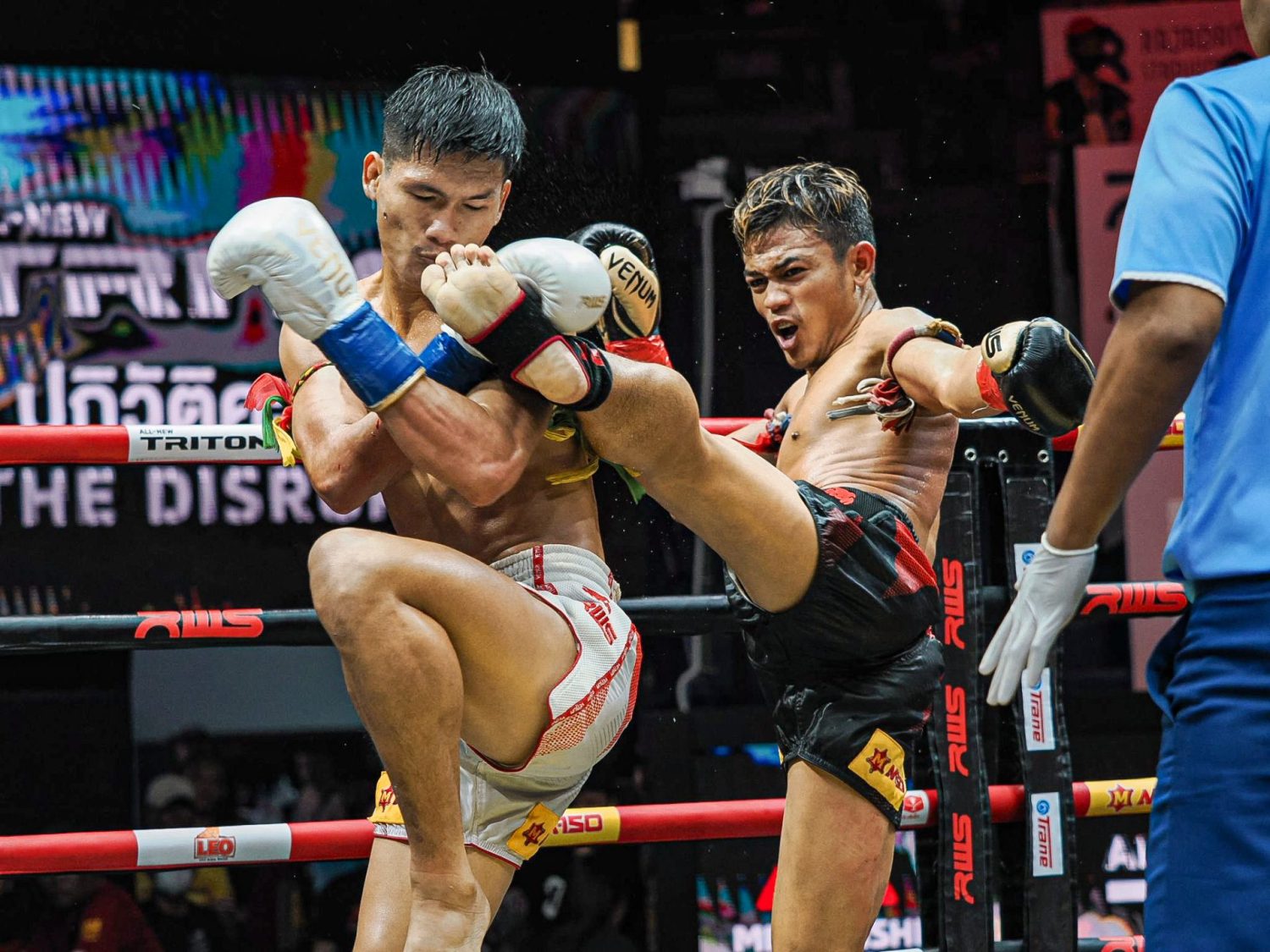
Muay Femur, often celebrated as the ultimate of technical excellence in the world of Muay Thai, is a fighting style that stands out for its precision, finesse, and strategic brilliance.
Muay Femur is the style that demands thorough attention to detail and perfect execution of techniques. It is characterized by the use of strategy to outsmart opponents, rather than relying solely on raw power. Fighters who adopt the Muay Femur style prioritize technique and timing over force. Therefore, it is one of the best Muay Thai striking techniques.
Muay Femur’s strikes and strategy
In Muay Femur, every strike is a masterpiece of precision. Fighters are trained to target specific areas of their opponent’s body with pinpoint accuracy. They aim to land strikes with the edge of the shin, the knee, and the elbows, maximizing impact while minimizing vulnerability.
Another hallmark of the Muay Femur style is the use of angles and superior footwork. Fighters in this style are skilled at creating and capitalizing on angles that allow them to attack while avoiding their opponent’s counters. By constantly moving and adjusting their position, Muay Femur practitioners make it difficult for their opponents to predict their movements.
Furthermore, Muay Femur fighters focus on outsmarting their opponents through Muay Thai combat strategy and tactical thinking. This may involve luring their adversaries into making mistakes, exploiting weaknesses, or capitalizing on their own strengths.

4. Muay Khao (Knee Fighter)
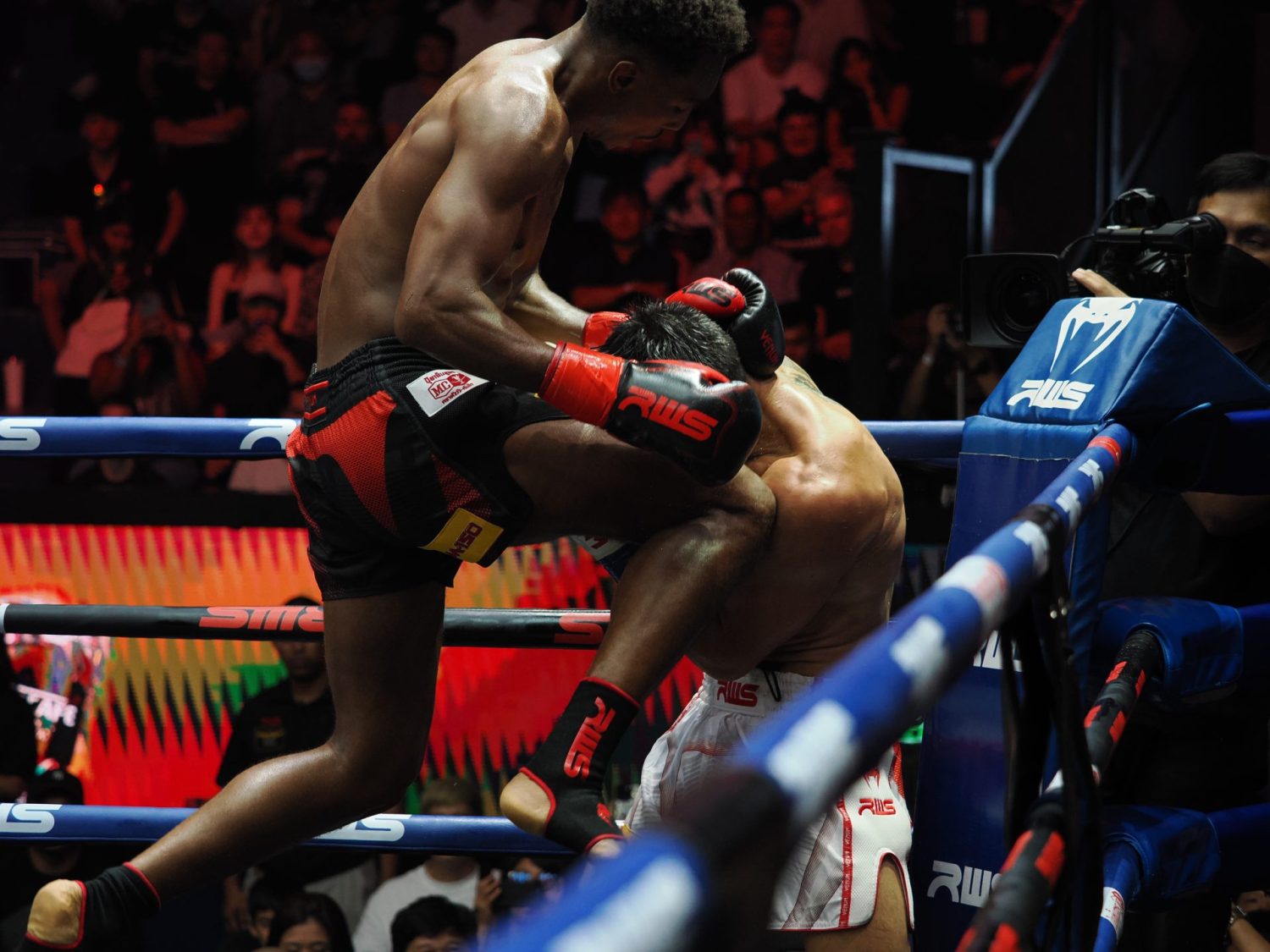
Muay Khao, often referred to as the “Knee Fighter” style, is a distinct and dominating facet of Muay Thai. Characterized by its clinch techniques in Muay Thai and devastating knee strikes, Muay Khao fighters are experts at controlling and overpowering their opponents.
Muay Khao is unmistakable for its relentless use of knee strikes, and its fighters are often considered the specialists of clinching. This style revolves around close-quarters combat, emphasizing the ability to grapple and knee an opponent into submission.
How knee fighters control and dominate opponents
- Muay Khao fighters control the pace and positioning of the fight through clinching.
- They use their strength and technique to close the distance and engage in the clinch.
- They utilize forearm and hand positioning to control their opponent’s head.
- The clinch control allows them to set the rhythm and direction of the fight.
5. Muay Mat

Muay Mat, often referred to as the “Clinch Fighter” style, is a specialized branch of Muay Thai that focuses on the mastery of clinch work. These fighters are experts in the art of wearing down opponents by locking them up and delivering a barrage of strikes from close quarters, including punishing elbow and knee strikes.
Muay Mat fighters are adept at dominating their opponents in the clinch, a range where they can leverage their physicality and technique to gain the upper hand. They seek to close the distance and enter the clinch, where they can control the pace of the fight and neutralize their adversary’s strengths.
While in the clinch, Muay Mat fighters unleash a diverse array of strikes, making them a formidable force at close range. These strikes can include brutal knee strikes, which target the opponent’s midsection and head, and elbow strikes, which are known for their destructive power.
Muay Mat fighter’s strategy
Muay Mat fighters read their opponents’ movements and adapt their clinch techniques accordingly. By capitalizing on their adversaries’ weaknesses and maintaining control, they create opportunities for their own strikes while minimizing the chances of counterattacks.
6. Muay Tae (Strong Leg Kicker)
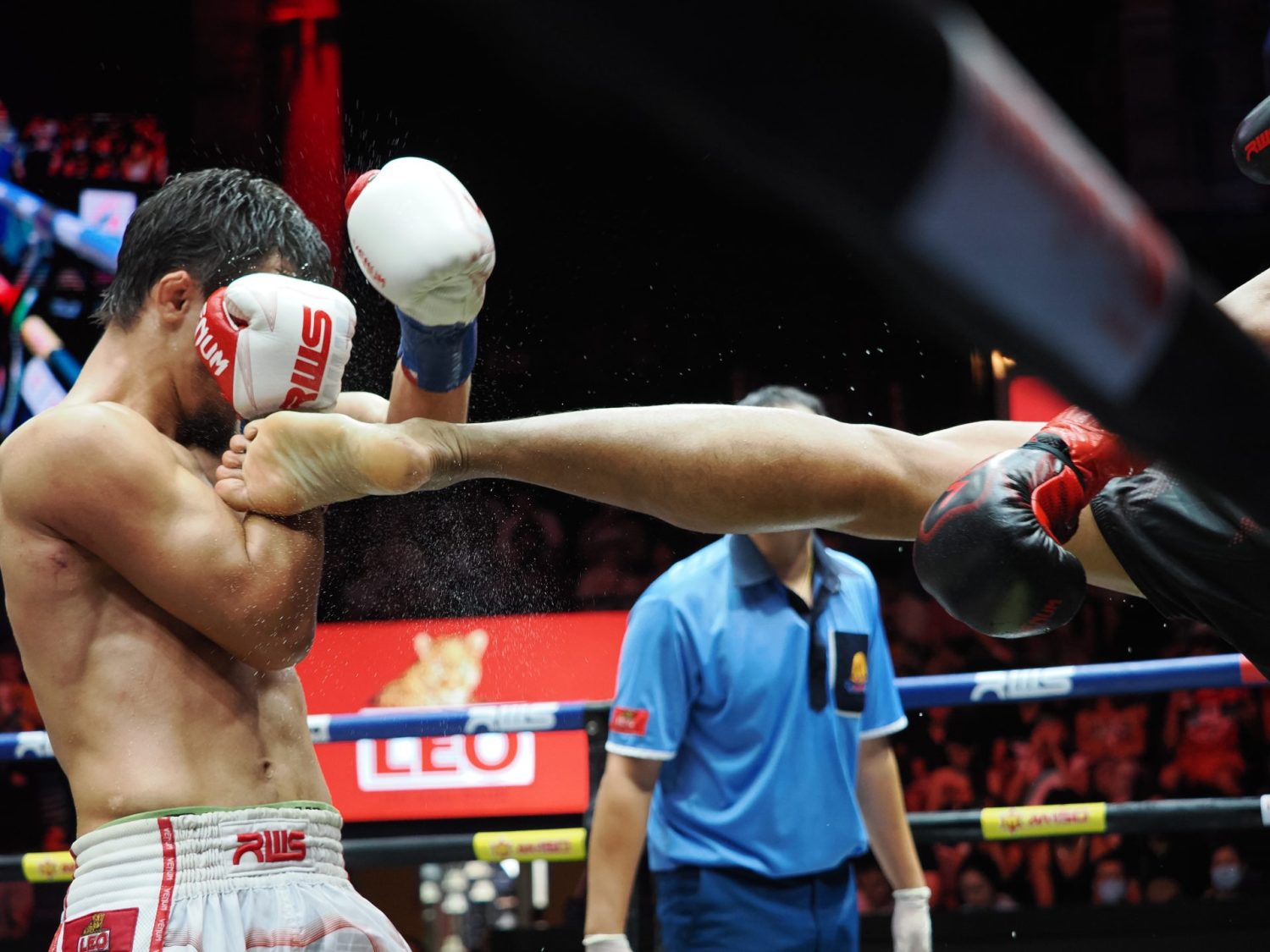
Muay Tae is a unique branch of Muay Thai martial arts that places a heavy emphasis on the devastating power of leg kicks. These fighters are renowned for their ability to weaken an opponent’s legs and restrict their mobility through powerful Muay Thai kick techniques.
Muay Tae fighters often incorporate techniques such as “low kicks” and “chopping kicks.” These techniques are executed with precision and are designed to inflict maximum damage to the opponent’s legs.
Muay Tae’s Tactical Impact
- These kicks can score points when executed effectively, especially when they cause visible damage to the opponent’s legs.
- The main purpose is to wear down the opponent’s lower body, disrupting their balance, movement, and ability to defend against follow-up strikes.
7. Muay Sawk (Aggressive elbow fighter)
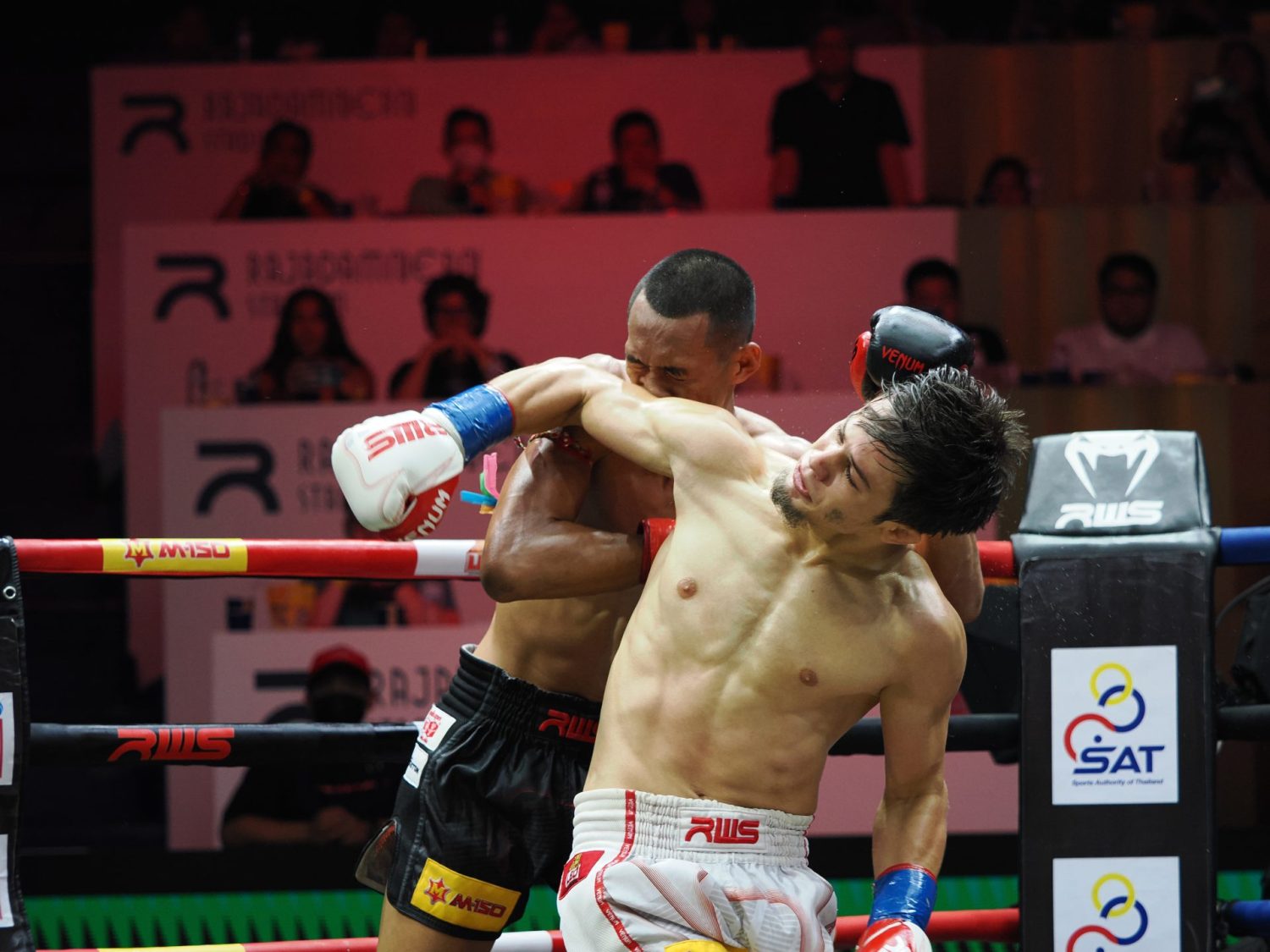
Muay Sawk is a style of Muay Thai that is characterized by its aggressive and relentless elbow approach. Fighters who adopt the Muay Sawk style are known for their forward pressure, constant attacking, and the ability to overwhelm their opponents with a high volume of elbow strikes.
- Physical Strength and Conditioning: Given the high-energy and aggressive nature of Muay Sawk, fighters in this style often prioritize strength and conditioning in their training. Endurance, power, and stamina are crucial attributes for sustaining a relentless pace throughout the duration of the fight.
- Clinch and Close-Range Attacks: While Muay Sawk is primarily associated with aggressive striking, fighters in this style are also comfortable engaging in the clinch. They use close-range techniques, including elbow strikes and knee strikes, to wear down opponents and control the fight in tight spaces.
You are invited to Rajadamnern
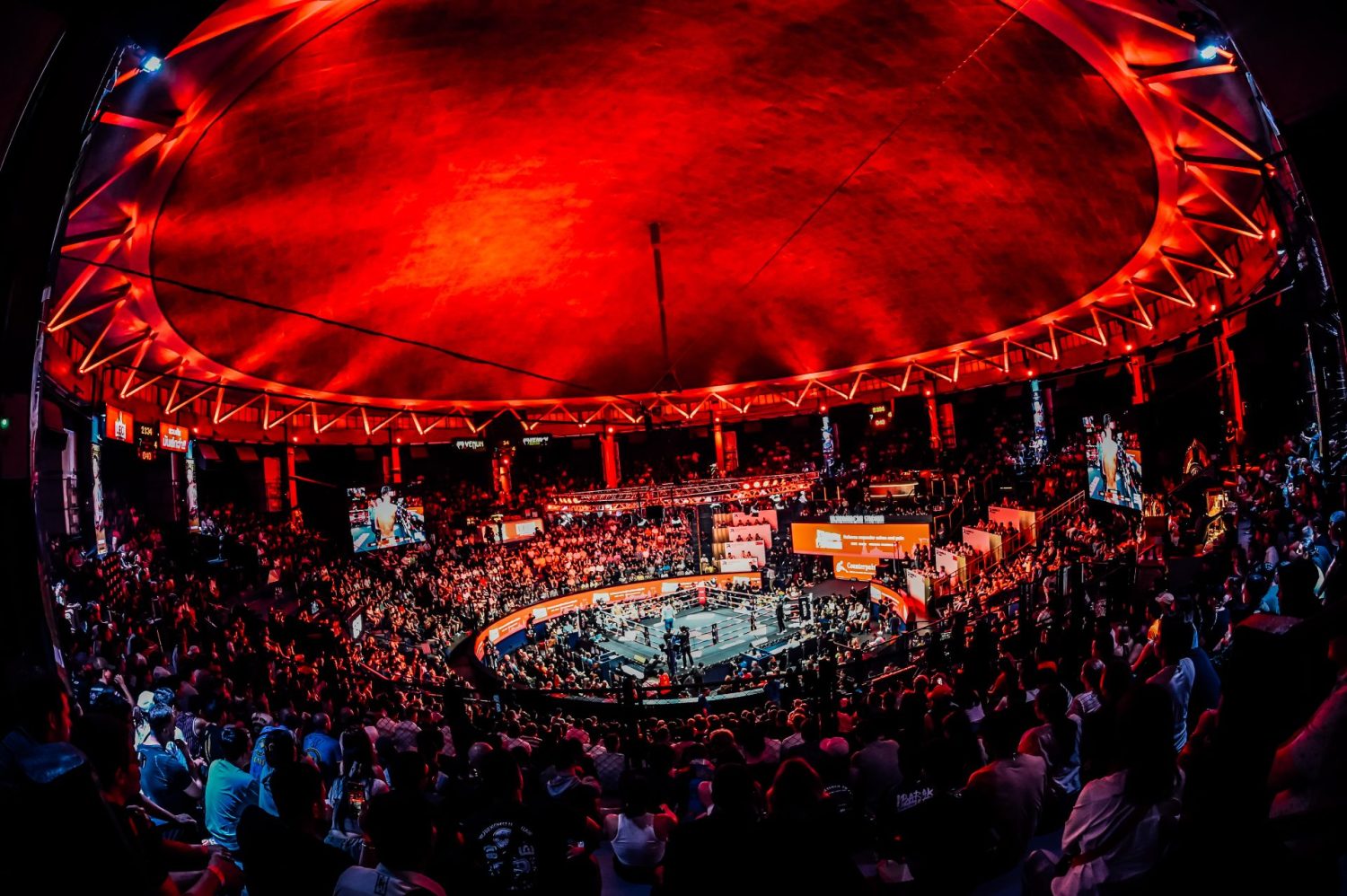
Immerse yourself in the heart-pounding world of authentic Muay Thai battles at the iconic Rajadamnern Muay Thai Stadium, located in the vibrant heart of Bangkok. As the fighters step into the ring, you’ll be blown away by diverse Muay Thai styles.
Rajadamnern has proudly hosted numerous live Muay Thai matches, showcasing the skill and artistry of fighters worldwide. Now, your chance has arrived to become part of this time-honored tradition. Grab your tickets now and prepare for an adrenaline-packed experience only Rajadamnern Stadium can deliver. Secure your seat today and be part of this epic clash!
Conclusion
We’ve delved into the fascinating world of five different Muay Thai styles, each with its unique characteristics, techniques, and strategic brilliance. From the precise strikes and technical prowess of Muay Femur to the dominance and control in the clinch of Muay Khao, the devastating leg kicks of Muay Tae, the fusion of Muay Thai, and the electrifying atmosphere of Muay Thai battles at the Rajadamnern Muay Thai Stadium.

Related News
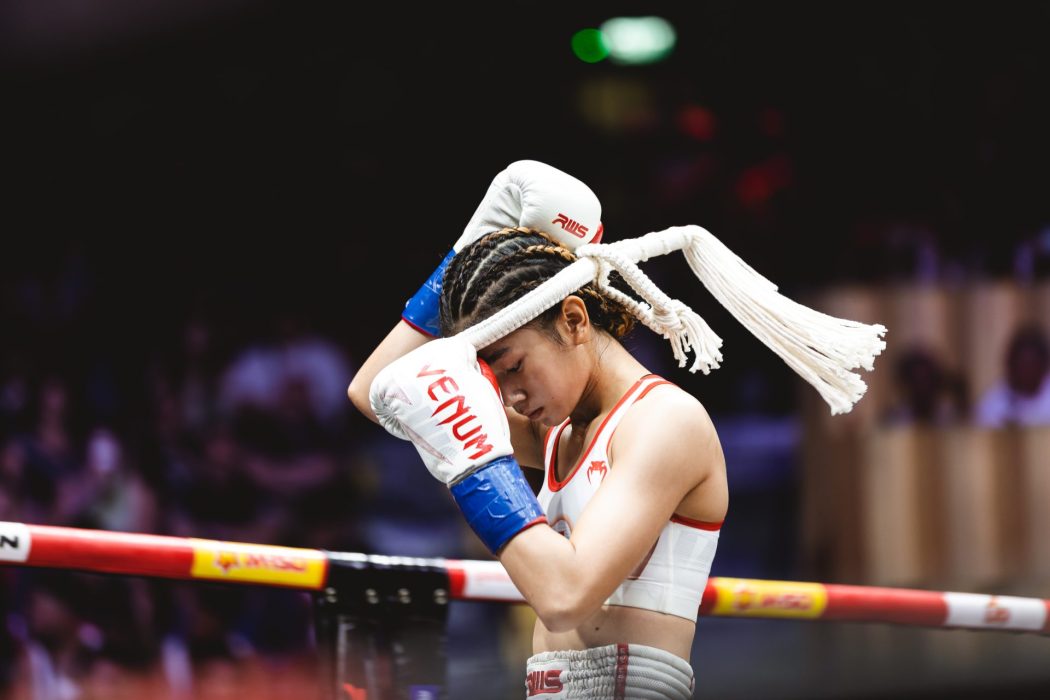
Mongkhon – Muay Thai Headband, History and Cultural Meaning
Jan 26, 2024
Discover the history and symbolism behind Muay Thai headbands, and experience this iconic tradition live at our Muay Thai stadium. Book tickets now!



